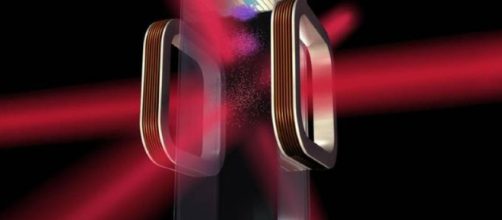nasa designed a freezing laboratory called the Cold atom Laboratory (CAL) which will be launched into space next August on Space X CRS-12. The lab which is about the size of a chest box is equipped with an electromagnetic knife, lasers and a vacuum chamber. These set of instruments are designed to bring gas particles to almost zero energy states. The experiment is intended to provide a better introspection on the forces of gravity and dark energy. The atoms at this temperature have never been observed before,
Wave-like form of a superfluid in space
On earth the force of gravity causes gas atoms to fall to the ground, allowing to observe them in a Bose-Einstein condensate state for just a few fractions of a second.
In space, the gas atoms are expected to present their wave-like form not only for fractions of a second but for a longer period of a second due that the microgravity experienced in the International Space Station permits to observe this.
Bose-Einstein condensate
This is a state of matter in which particles of gas are cooled to very low temperatures that get close to absolute zero (0° K or - 173.15 C°). This state is attained by cooling low-density gas, causing it to condense into the lowest quantum state and turning into a new form of matter known as Bose-Einstein condensate.- superfluid with zero viscosity. At this state, the macro laws of physics fail and quantum physics are more apparent. Matter stops showing particle characteristics and begins to take the form of a light wave.
Outcomes stemming from Bose-Einstein experiment in space
The results of this experiment could be applied to technologies, including quantum computers, sensors and atomic clocks utilised in space navigation. It´s believed that the discoveries could broaden the knowledge about unknown physics, such as dark energy. The lack of viscosity of the superfluid under which the scientific investigation is going to the center will allow understanding the physics of superfluids and the way in which energy is transferred in this low viscosity gas.

